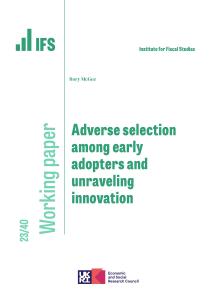After shops and other venues reopened in June, consumer spending started to rebound. But the recovery stalled at the end of July, and even by the end of September spending was still at 89% of the level seen at the same time in 2019. And the fifth of local authorities with the lowest local COVID case counts – which are more likely to be in the lower ‘tiers’ and thus be eligible for less government support – have fared little differently, with spending at 90% of 2019 levels. Spending in the ‘lockdown’ sectors such as hospitality, which disproportionately employ low earners, remains the furthest behind normal levels, even in areas that have seen no re-tightening of restrictions on those sectors.
These are amongst the findings of new research, funded by the Standard Life Foundation, using real-time bank account data from budgeting app Money Dashboard.
Key findings include:
- The overall decline in expenditures relative to last year masks substantial differences between sectors: spending on groceries and takeaways has plateaued at about 10% and 60% higher than in 2019, while in restaurants and pubs, holidays, and transport the spending recovery has petered out at 20%, 60%, and 30% lower. This will have consequences for workers in these sectors, and those in the still-struggling sectors are disproportionately low earners.
- There has been a persistent shift in shopping and payment habits during the crisis, away from cash and towards online retail. Even in August and September, cash use remained below half of normal levels whereas spending on online-only merchants remained over a quarter higher. This may be indicative of longer-run changes in spending patterns.
- For the last several months, consumers’ expenditure has borne little relationship to whether they live in an area that has high or low virus prevalence compared with the national average, with the extent of recovery similar between areas with high and low case counts.
The changes in spending have had different implications for richer and poorer households:
- ‘Forced saving’ – declines in spending on goods and services that were substantially affected or shut down by lockdown – has been significant across the income distribution, but greater for higher-income households, with the top fifth reducing spending on these goods by 41% (£195 per month), compared with 30% (£75) for the poorest fifth.
- For richer households, declines in spending during the crisis have outweighed income falls, meaning that they have accumulated savings at a faster rate than normal. But spending falls have been much smaller among the poorest households, leading to an average £170 per month decline in their bank balances between March and September relative to what we would expect in normal times.
Alex Davenport, a Research Economist at IFS and an author of the report, said ‘The recovery in consumer spending initially seen following the easing of lockdown appears to have stalled, and spending in certain sectors remains well below levels seen in previous years with little change since the end of July. This will have potentially devastating consequences for businesses in those sectors, and is true nationwide, even in areas where COVID-19 prevalence is still relatively low.’
Tom Waters, a Senior Research Economist at IFS and an author of the report, said ‘The inability to spend in many shut-down sectors of the economy has led to reduced spending across the income distribution. However, spending falls have been higher among higher income groups, and more than outweigh falls in income, with the opposite true for the poor. This means, on average, richer households have accumulated savings faster than normal whereas poorer households have run them down or accumulated debts.’
Mubin Haq, Chief Executive of Standard Life Foundation, funders of the report, said “Increasingly the pandemic is exacerbating existing inequalities. The poorest were the least able to cut back on spending, as much of their expenditure is on daily essentials. Coupled with income falls, they saw their bank balances reduce by nearly £200 a month whilst those on higher incomes saw increases of nearly £400 a month. Finances for those on the lowest incomes are likely to deteriorate further especially if the government does not extend the £20 a week uplift to Universal Credit beyond March next year.”












